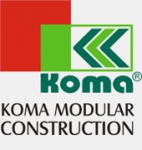
Modular architecture at the Crossroads of Architecture
In this year's second edition of the Crossroads of Architecture event, one block was dedicated to Modular Construction and Modular Architecture. This topic was examined from various perspectives. The entire event was moderated by JUDr. David Šťáhlavský, who works at Czech Radio.
The Crossroads of Architecture conference itself was the opening conference of the professional accompanying program of the 21st International Building Fair FOR ARCH 2010. The main themes were modular architecture in the city and is Prague architecturally pulsating or preserved? The culmination of the entire program was Michel Rojkind's lecture.
A common thread running through the first block was the challenge to architects not to be afraid to use modular construction in their designs where they can apply the advantages of this construction method. Only in collaboration with architects can modular construction break free from the stereotype of inferior temporary buildings that resemble construction site facilities rather than full-fledged buildings.
Ing. Martin Hart, a representative of the leading modular manufacturer KOMA MODULAR CONSTRUCTION, acquainted the attendees with the roots of modular construction, showcased successful realizations by world module manufacturers, provided examples from global architectural studios, and reiterated the advantages of modular buildings through examples. He also demonstrated the application of modules in fields other than construction. The advantages of modular buildings were also highlighted by the city representative from Jihlava Mgr. Radek Vovsík, who shared experiences from the construction of a modular kindergarten. He stated that despite initial skepticism regarding containers, which were poorly promoted by Čunek's containers, enthusiasm and praise for this method of construction followed. It would not have been possible to build a four-class kindergarten in such a short time with another type of construction. Both city representatives, teachers from the kindergarten, and parents are satisfied with the construction. After the implementation, no one in Jihlava talks about containers anymore; they learned to use the terms modules and modular construction. The overall price of the modular kindergarten also contributed to everyone's satisfaction. You can read more about the Jihlava modular kindergarten here.
The contribution of sociologist and educator PhDr. Jiří Ryba was also interesting. He reflected on the fact that during the First Republic, the Czech public was more willing to accept and perceive modern architecture than today's public. He also pondered the stigma of "Čunek's containers" and how this event negatively affected thinking and perceptions about container and modular buildings.
Ing. arch. Petr Šikola, architect from the architectural studio DOMYJINAK s.r.o., shared his experiences with the attendees regarding designing modular buildings.
Another contributing discussant was MgA. Jiří Sulženko, who provided an example of modular construction for a temporary cultural center at the "Street for Art" event.
The first block of the conference was concluded by Luc Deleu, an inspiring and imaginative Belgian architect from TOP OFFICE studio. Luc Deleu himself says: “If building means improving the world, then we are building too much and too quickly. Building is the reason for architecture, but architecture is not the reason for building. Architecture is spiritual, it can exist without buildings. So I started with temporary Lego architecture and later began constructing disassemblable archetypes from containers.”
I would like to urge the architectural community not to be afraid to design objects made from spatial modules. Our company is ready to realize these designs. Only in cooperation with architects will we build high-quality architectural modular buildings similarly to what is done in the Benelux countries, Germany, England, or Japan.
In the attached photographs, you can see images from the first block of the conference and some realizations of modular buildings.
The Crossroads of Architecture conference itself was the opening conference of the professional accompanying program of the 21st International Building Fair FOR ARCH 2010. The main themes were modular architecture in the city and is Prague architecturally pulsating or preserved? The culmination of the entire program was Michel Rojkind's lecture.
A common thread running through the first block was the challenge to architects not to be afraid to use modular construction in their designs where they can apply the advantages of this construction method. Only in collaboration with architects can modular construction break free from the stereotype of inferior temporary buildings that resemble construction site facilities rather than full-fledged buildings.
Ing. Martin Hart, a representative of the leading modular manufacturer KOMA MODULAR CONSTRUCTION, acquainted the attendees with the roots of modular construction, showcased successful realizations by world module manufacturers, provided examples from global architectural studios, and reiterated the advantages of modular buildings through examples. He also demonstrated the application of modules in fields other than construction. The advantages of modular buildings were also highlighted by the city representative from Jihlava Mgr. Radek Vovsík, who shared experiences from the construction of a modular kindergarten. He stated that despite initial skepticism regarding containers, which were poorly promoted by Čunek's containers, enthusiasm and praise for this method of construction followed. It would not have been possible to build a four-class kindergarten in such a short time with another type of construction. Both city representatives, teachers from the kindergarten, and parents are satisfied with the construction. After the implementation, no one in Jihlava talks about containers anymore; they learned to use the terms modules and modular construction. The overall price of the modular kindergarten also contributed to everyone's satisfaction. You can read more about the Jihlava modular kindergarten here.
The contribution of sociologist and educator PhDr. Jiří Ryba was also interesting. He reflected on the fact that during the First Republic, the Czech public was more willing to accept and perceive modern architecture than today's public. He also pondered the stigma of "Čunek's containers" and how this event negatively affected thinking and perceptions about container and modular buildings.
Ing. arch. Petr Šikola, architect from the architectural studio DOMYJINAK s.r.o., shared his experiences with the attendees regarding designing modular buildings.
Another contributing discussant was MgA. Jiří Sulženko, who provided an example of modular construction for a temporary cultural center at the "Street for Art" event.
The first block of the conference was concluded by Luc Deleu, an inspiring and imaginative Belgian architect from TOP OFFICE studio. Luc Deleu himself says: “If building means improving the world, then we are building too much and too quickly. Building is the reason for architecture, but architecture is not the reason for building. Architecture is spiritual, it can exist without buildings. So I started with temporary Lego architecture and later began constructing disassemblable archetypes from containers.”
I would like to urge the architectural community not to be afraid to design objects made from spatial modules. Our company is ready to realize these designs. Only in cooperation with architects will we build high-quality architectural modular buildings similarly to what is done in the Benelux countries, Germany, England, or Japan.
In the attached photographs, you can see images from the first block of the conference and some realizations of modular buildings.
The English translation is powered by AI tool. Switch to Czech to view the original text source.
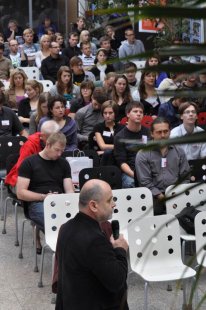
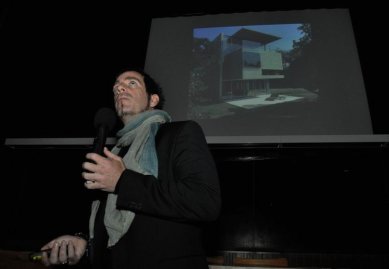
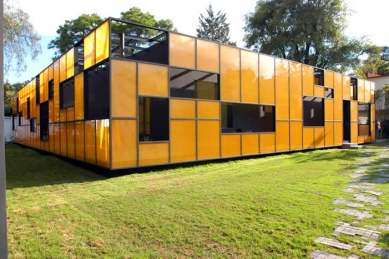
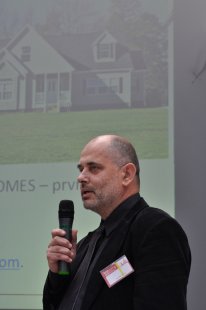
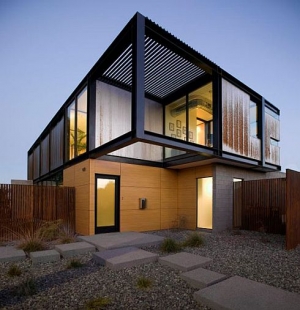
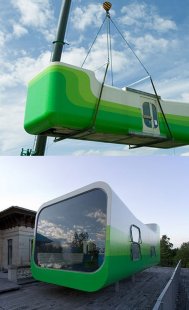
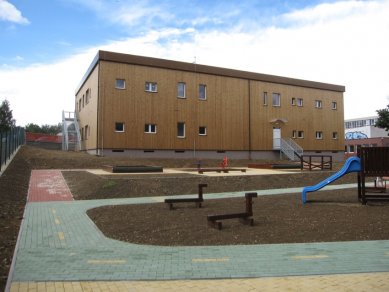
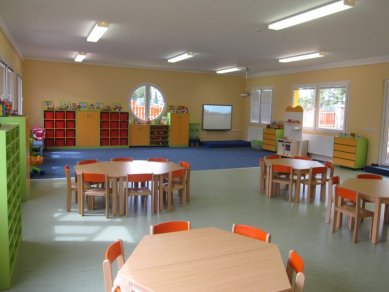
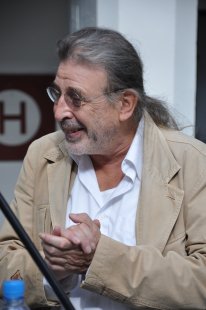
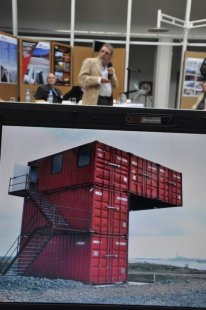
0 comments
add comment


